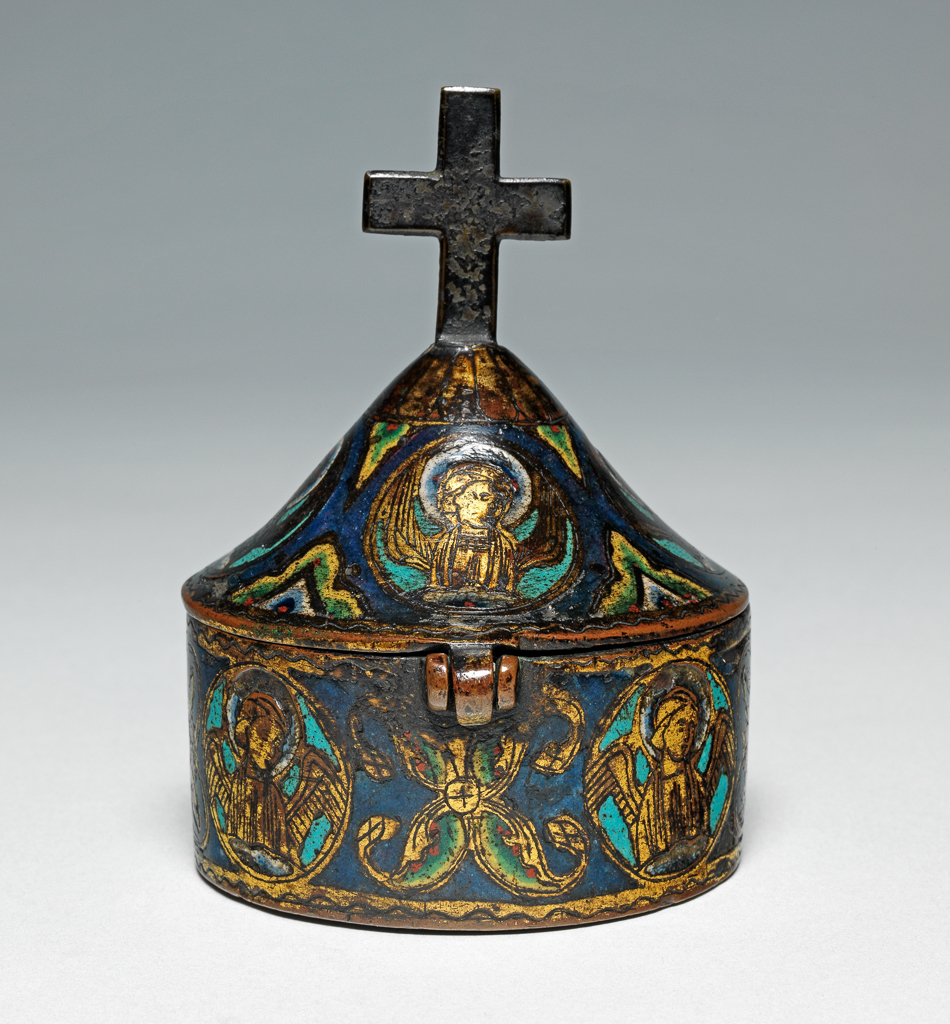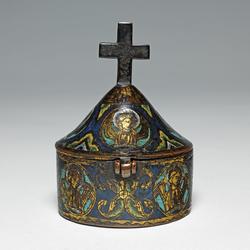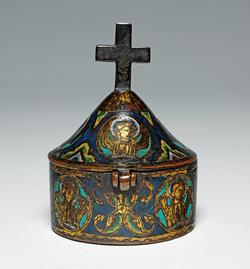Current Location: Gallery 32 (Rothschild)
Maker(s)
Maker:
uncertain
Entities
Categories
Description
Copper, champlevé, engraved, enamelled, and gilt.
Copper, champlevé, engraved, enamelled in mid-blue, turquoise green, yellow, and a little red enamel, and gilt. Cylindrical with a gilded cupola inside the lower part, and a conical cover surmounted by a replacement flat cross. The outside is decorated with four four medallions each containing a half-length angel with halo raising out of clouds, reserved in the metal. On the cover there are four similar medallions with angels, and between them trefoil and triangular designs in wavy bands of differing colours.
Notes
History note: Uncertain before testator
Legal notes
L.D. Cunliffe Bequest, 1937
Measurements and weight
Height: 9.5 cm
Height: 3½ in
Width: 8 cm
Acquisition and important dates
Method of acquisition: Bequeathed
(1937)
by
Cunliffe, Leonard Daneham
Dating
13th Century
Medieval
Circa
1200
CE
-
1300
CE
Note
A pyx (from Latin pyxis, a box), is a container for the Euchar¬istic bread or Host (Latin hostia, a victim or sacri¬fice). By the thirteenth century two pyxes were considered necessary for each church: one to hold the unconsacrated wafers, and the other to hold the consecrated wafers. Numerous champlevé enamel pyxes have survived which suggests that they were among the most frequently commissioned liturgical objects. Foliated scrolls and busts of angels in were one of the most common types of decoration. The popularity of angels may be related to a reference to the Host as the ‘bread of angels’ (panis angelorum) by Saint Augustine (354-430), and later by medieval theologians.
School or Style
Gothic
People, subjects and objects depicted
Components of the work
Hinge Plaque
composed of
iron
( tested with magnet)
Decoration
composed of
enamel
gold
Base
Diameter 6.8 cm
Diameter 2⅝ in
Drum Only
Height 1¼ in
Materials used in production
Copper
References and bibliographic entries
Identification numbers
Accession number: M.12-1938
Primary reference Number: 139828
Stable URI
Audit data
Created: Saturday 6 August 2011
Updated: Tuesday 12 November 2024
Last processed: Thursday 14 August 2025
Associated departments & institutions
Owner or interested party:
The Fitzwilliam Museum
Associated department:
Applied Arts

 IIIF Manifest
IIIF Manifest





